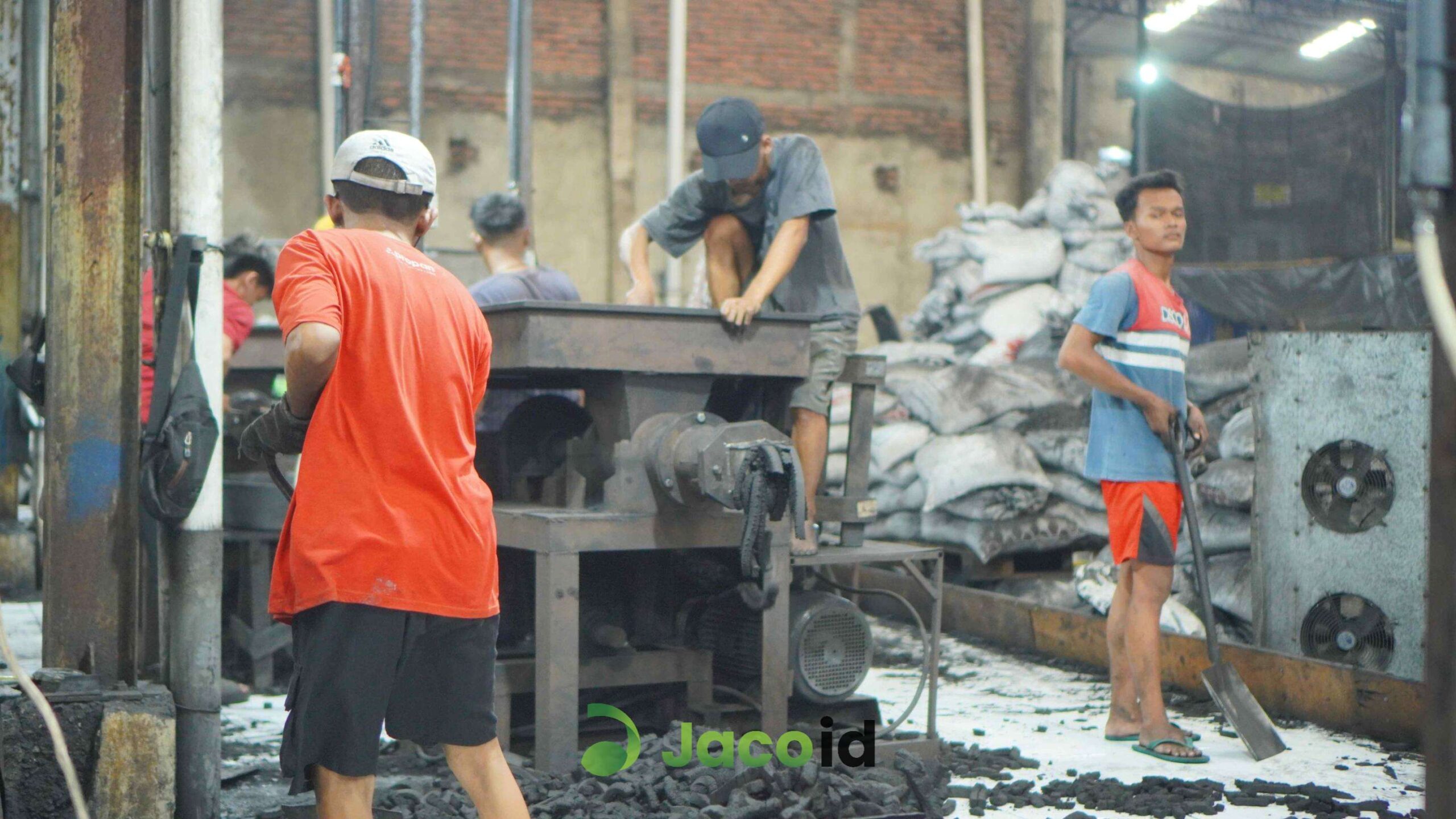
Charcoal briquettes, widely used for cooking and heating purposes, undergo a meticulous manufacturing process that ensures quality, efficiency, and environmental sustainability. One of the coconut charcoal briquette supplier in Indonesia is Jacoid. Jacoid makes charcoal briquettes from high-quality and eco-friendly ingredients that are definitely very environmentally friendly. This article delves into the detailed steps involved in producing charcoal briquettes, highlighting key aspects of the manufacturing process.
Raw Material Preparation
The manufacturing process of charcoal briquettes begins with the selection and preparation of raw materials. Commonly used raw materials include charcoal fines, sawdust, wood chips, and biomass residues. These materials are selected based on their carbon content, moisture levels, and binding properties. They undergo initial processing steps such as drying and crushing to achieve uniform particle size and moisture content suitable for briquette production.
Carbonization
Carbonization is a critical step where raw materials are converted into charcoal through heating in the absence of oxygen. This process removes volatile components and moisture, leaving behind carbon-rich charcoal. Traditional methods involve carbonization in kilns or pits, while modern techniques utilize mechanized carbonization chambers that control temperature and airflow for efficient conversion.
Mixing and Binding
Once carbonized, the charcoal undergoes mixing with binding agents to form a cohesive mixture suitable for briquette formation. Common binders include starch, molasses, clay, and other natural adhesives that facilitate the binding of charcoal particles during compression. The ratio of charcoal to binder varies depending on desired briquette characteristics such as hardness, burning time, and ash content.
Compression and Forming
The mixed charcoal and binder blend is fed into briquetting machines where it undergoes compression under high pressure. This process forms the mixture into uniform briquettes of predetermined shapes and sizes. The pressure applied during compression plays a crucial role in achieving dense and durable briquettes that resist crumbling and maintain structural integrity during handling and burning.
Drying and Curing
After forming, the briquettes undergo a drying process to reduce moisture content and enhance combustion efficiency. Drying can occur naturally in ventilated warehouses or through mechanical drying systems that use controlled heat and airflow. Proper drying ensures that briquettes achieve optimal burning characteristics and minimize smoke emissions during use.
Packaging and Distribution
Once dried, charcoal briquettes are packaged according to market preferences and distribution channels. Packaging materials typically include bags or boxes designed to protect briquettes from moisture and physical damage during storage and transportation. Manufacturers ensure compliance with quality standards and labeling requirements before distributing briquettes to retailers, wholesalers, and consumers.
Environmental Considerations
Charcoal briquette manufacturing has evolved to prioritize environmental sustainability. Many manufacturers adopt efficient technologies that reduce energy consumption and emissions during production. Additionally, utilizing biomass residues and waste materials as raw materials promotes resource efficiency and minimizes environmental impact compared to traditional charcoal production methods that rely on forest logging.
Market Demand and Future Outlook
The global demand for charcoal briquettes continues to grow due to their convenience, affordability, and versatility in household and industrial applications. Manufacturers are increasingly focusing on product innovation, such as smokeless briquettes and specialized blends for specific uses. Future trends indicate a shift towards sustainable practices and eco-friendly products, driven by consumer preferences for clean energy solutions and environmental stewardship.
Conclusion
In conclusion, the manufacturing process of charcoal briquettes involves several intricate steps from raw material preparation to packaging and distribution. By embracing technological advancements and sustainable practices, manufacturers ensure the production of high-quality briquettes that meet consumer demands while minimizing environmental impact. As the industry evolves, innovation and efficiency will play pivotal roles in shaping the future of charcoal briquette manufacturing, meeting the growing global demand for clean and sustainable energy solutions.
